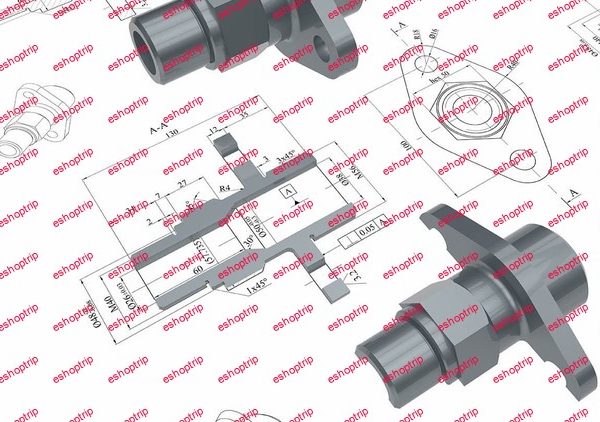Published 11/2022
MP4 | Video: h264, 1280×720 | Audio: AAC, 44.1 KHz
Language: English | Size: 2.46 GB | Duration: 4h 40m
DoE Using Minitab: From Basics to Plackett-Burman, Full/Fractional Factorial, Response Surface (CCD) Designs
What you’ll learn
Fundamentals of the Design of Experiments (DoE) using simple to understand examples.
Screening (Plackett-Burman), Modelling (Full, Fractional Factorial and Split Plot Designs) and Optimizing (Central Composite Design) Designs
A quick refresher on ANOVA and Regression Analysis is also included to help you understand the results of analysis clearly.
Clear understanding of Blocking, Analysis of Covariance, Replication, Confounding and Design Resolutions.
Requirements
Basic understanding of statistics is preferred, however we will cover the concepts required to understand DoE and interpret the alaysis results.
Description
The design of experiments is a systematic approach of studying the relationship between various inputs (factors) on the key output (response).This is the basics to the intermediate level course. In this course, we start with the basic understanding of the Design of Experiments (DoE) process by performing manual calculations on simpler processes.Considering the fact that this course will be taken by students from various sectors, we have kept the case studies simpler by using examples such as coffee tasting and catapult. These simple examples will help student focus on the concepts rather than focusing on the specific case studies.This course assumes that you do not have any prior knowledge of the Design of Experiments, but you do have a basic understanding of statistics principles, such as ANOVA and Regression. However, we will review these two topics (ANOVA and Regression) to provide adequate knowledge to interpret the DoE results.The course consists of video lectures, readings, and quizzes that help build upon each other so that by the end of the course, you have gained a firm grasp of the topics covered.Topics Covered:Section 1. Basics of Design of Experiments: We will start this course by understanding the definitions of common terms used in DoE. You will clearly understand factorial and partial factorial designs as these will be explained by using an example of coffee tasting. In addition, we will also use the catapult experiment to understand the variation in processes.Other concepts that are covered in this section include: Blocking, Analysis of Covariance, Replication, Confounding and Design Resolutions.This section will set a strong foundation for you understand foundational concepts.Section 2. ANOVA and Regression: Even though it is expected that you have some basic understanding of these concepts, we will still cover these two topics to provide you with sufficient knowledge to interpret the results of an experiment.Section 3. Screening, Modelling and Optimizing: In this section, we will cover three main milestones in any designed experiment. For screening, we will use Plackett-Burman Design to reduce the number of factors to be studied. In modelling, we will use full factorial, fractional factorial and Split Plot Designs (for Hard to Change Factors). In the last, we will optimize the process, and for that, we will use Central Composite Design (CCD).
Overview
Section 1: Foundation of Design of Experiments (Definitions and Basic Concepts)
Lecture 1 1a Introduction to Design of Experiments
Lecture 2 1b Dependent and Independent Variables
Lecture 3 1c Purpose of DoE
Lecture 4 1d Stages of DoE
Lecture 5 1e Factor, Level and Treatment
Lecture 6 1f Two Factors Two Levels Experiment
Lecture 7 1g Plots for Two Factors Two Levels Experiment
Lecture 8 1h Regression Equation for Two Factors Two Levels Experiment
Lecture 9 1i Minitab Demonstration: Two Factors Two Levels Experiment
Lecture 10 1j Two Factors Two Levels with Interaction
Lecture 11 1k Regression Equation for for 2×2 Experiment with Interaction
Lecture 12 1l Minitab Demo 2×2 Experiment with Interactions
Lecture 13 1m Catapult Experiment with 2 Factors
Lecture 14 1n Noise Factors Three Types
Lecture 15 1o Blocking
Lecture 16 1p Analysis of Covariance
Lecture 17 1q Replication and Repetition
Lecture 18 1r Catapult Experiment with 2 Replications
Lecture 19 1s Minitab Demo – Catapult Experiment with 2 Replications
Lecture 20 1t Adding the Third Factor
Lecture 21 1u Three Factors Regression Equation
Lecture 22 1v Results of Three Factors Experiment
Lecture 23 1w Minitab Demo – Three Factors Experiment
Lecture 24 1x Three Factors Experiment with Center Point
Lecture 25 1y Minitab Demo Experiment with Center Point
Lecture 26 1z Partial Factorial Design Introduction
Lecture 27 1z1 Confounding in Partial Factorial Design
Lecture 28 1z2 Design Resolution
Section 2: Understanding ANOVA and Regression (A Quick Overview)
Lecture 29 2a ANOVA
Lecture 30 2b Regression Getting Started
Lecture 31 2c Assumptions in Regression
Lecture 32 2d Comparing Models
Lecture 33 2e R Square Predicted
Lecture 34 2f Model Simplification
Section 3: Screening, Modelling and Optimizing Designs
Lecture 35 3a Screening Designs
Lecture 36 3b Plackett Burman Design Demonstration
Lecture 37 4a Types of Factorial Designs
Lecture 38 4b Split Plot Design
Lecture 39 4c Minitab Demo – Split Plot Design
Lecture 40 4d Catapult Full Factorial Design
Lecture 41 4e Minitab Demo – Catapult Full Factorial Design – Part 1
Lecture 42 4f Minitab Demo – Catapult Full Factorial Design – Part 2
Quality Engineers,Quality Managers,All Engineers,Performance Improvement Professionals,Any one who wants to understand the behaviour of a complex process to achieve desired outcome
HOMEPAGE
https://anonymz.com/?https://www.udemy.com/course/design-of-experiments-doe-with-minitab/











Reviews
There are no reviews yet.